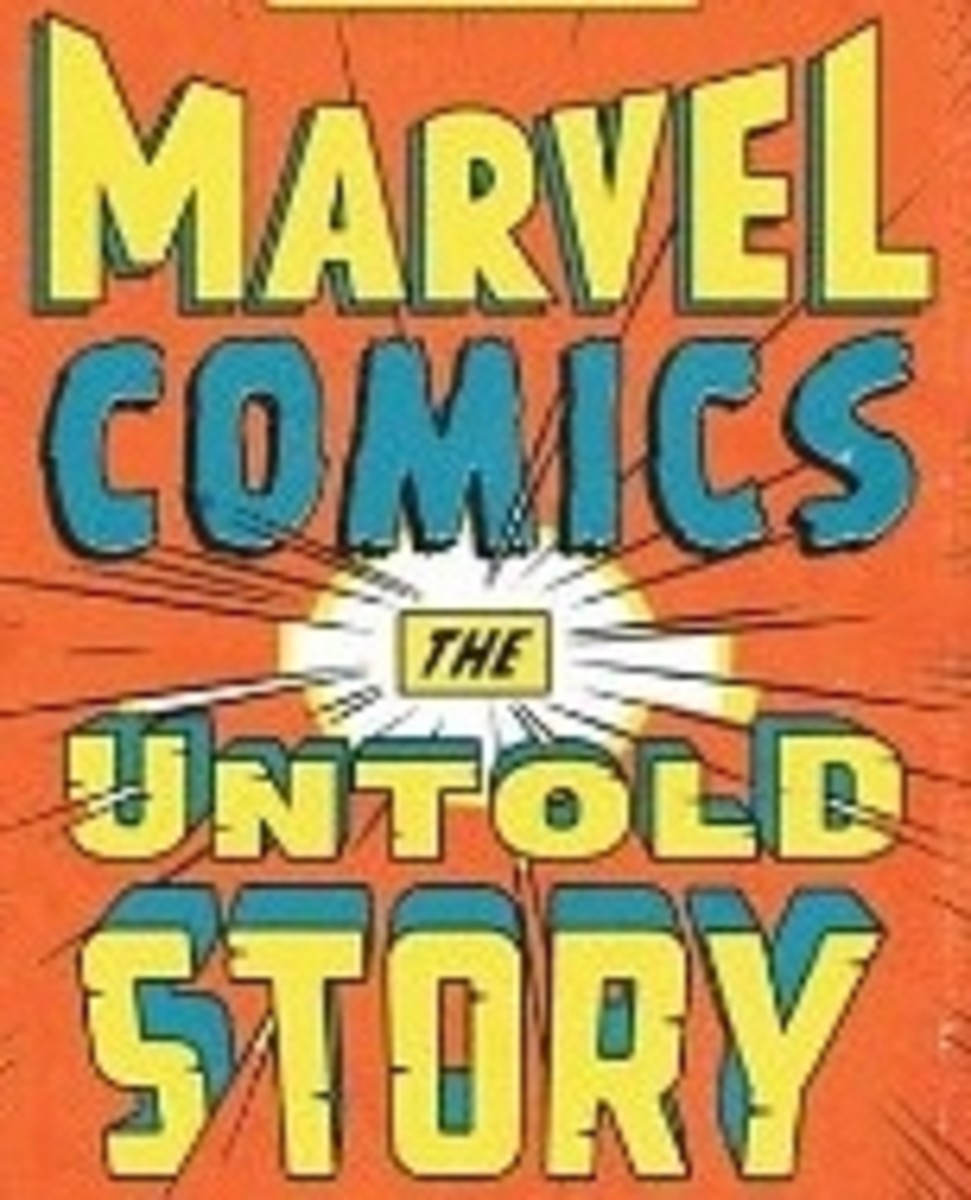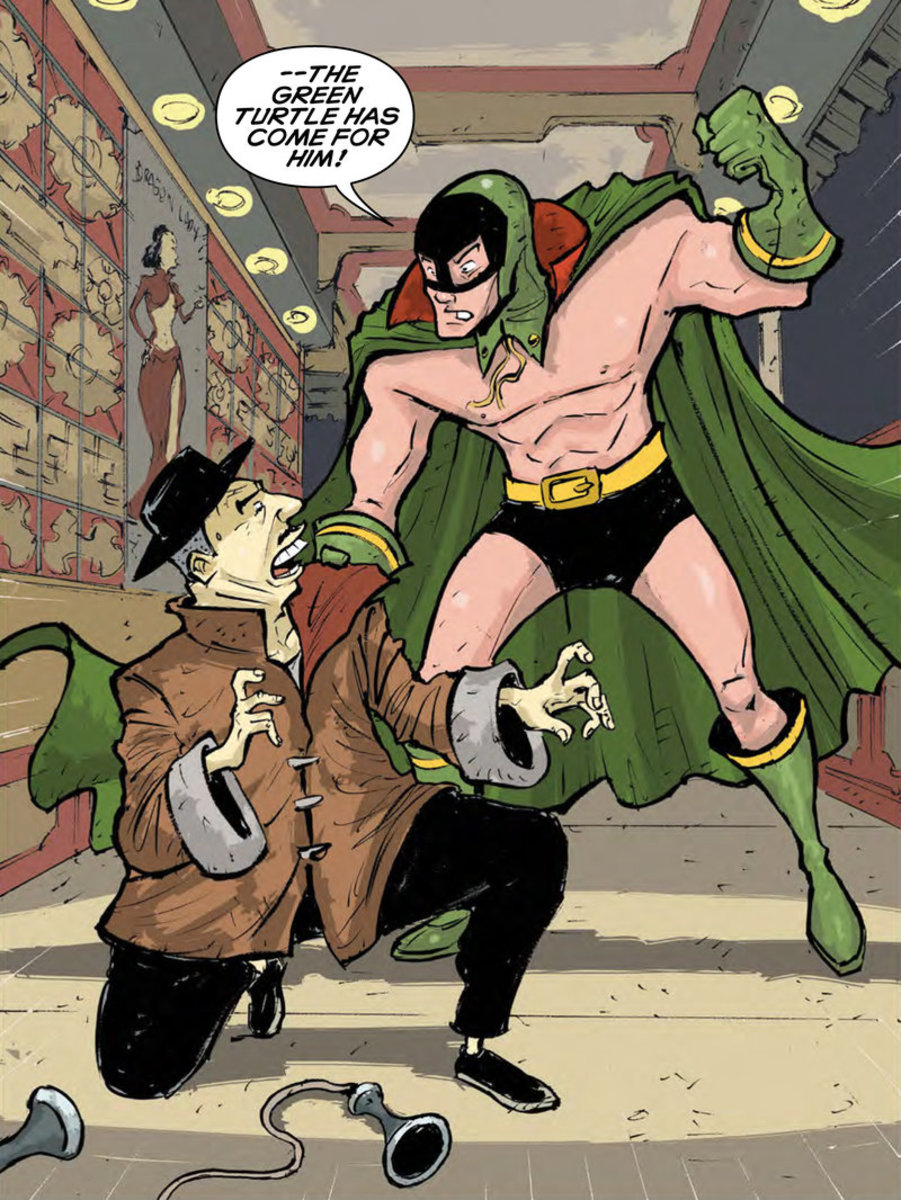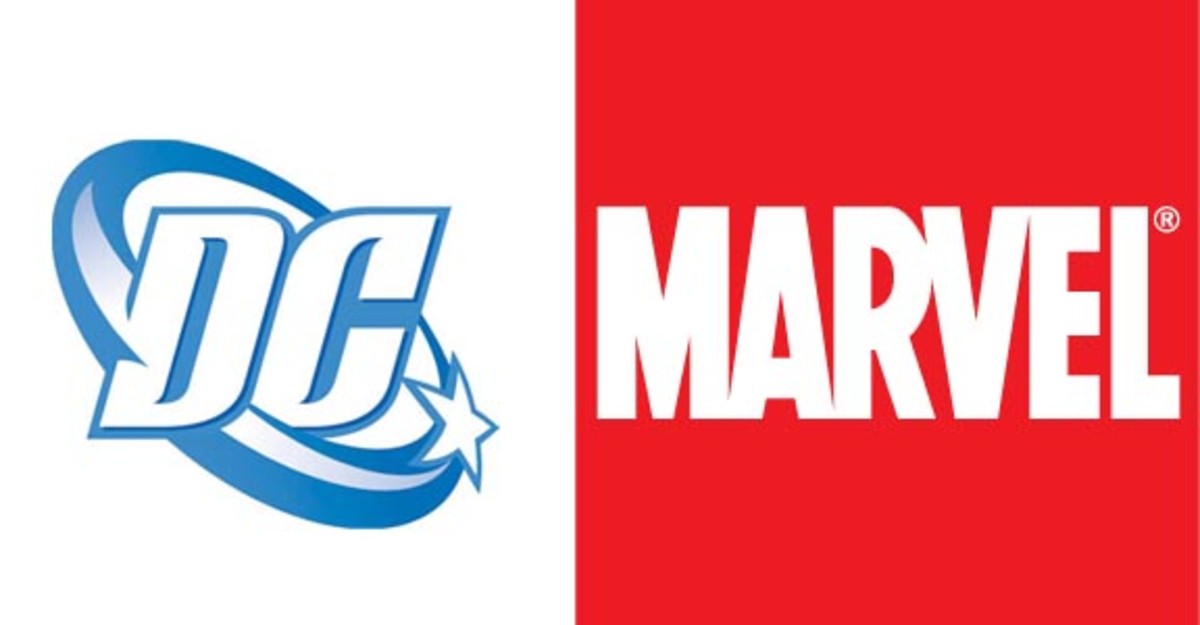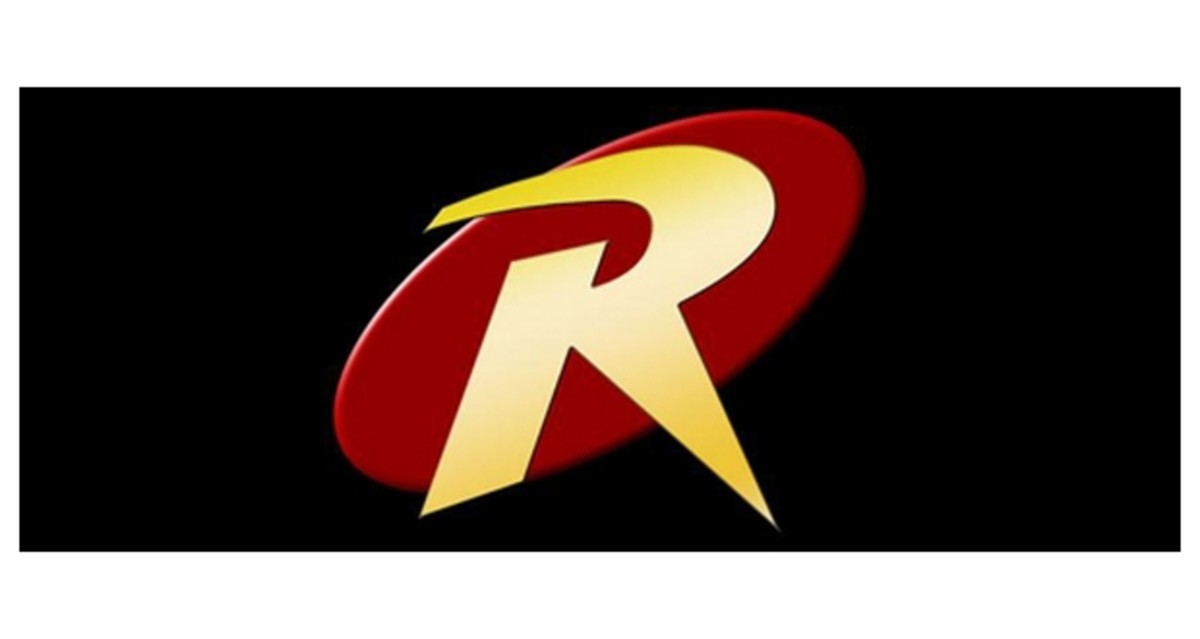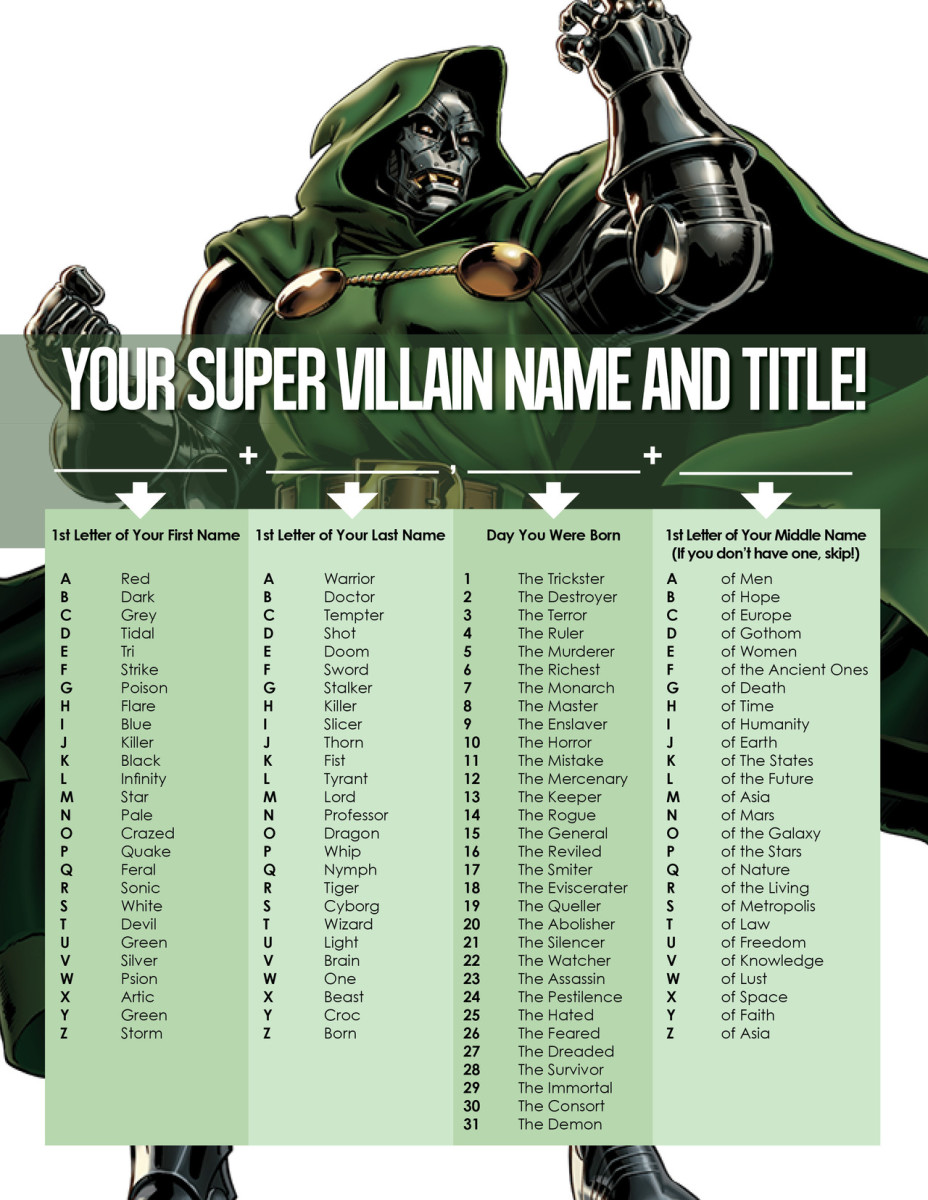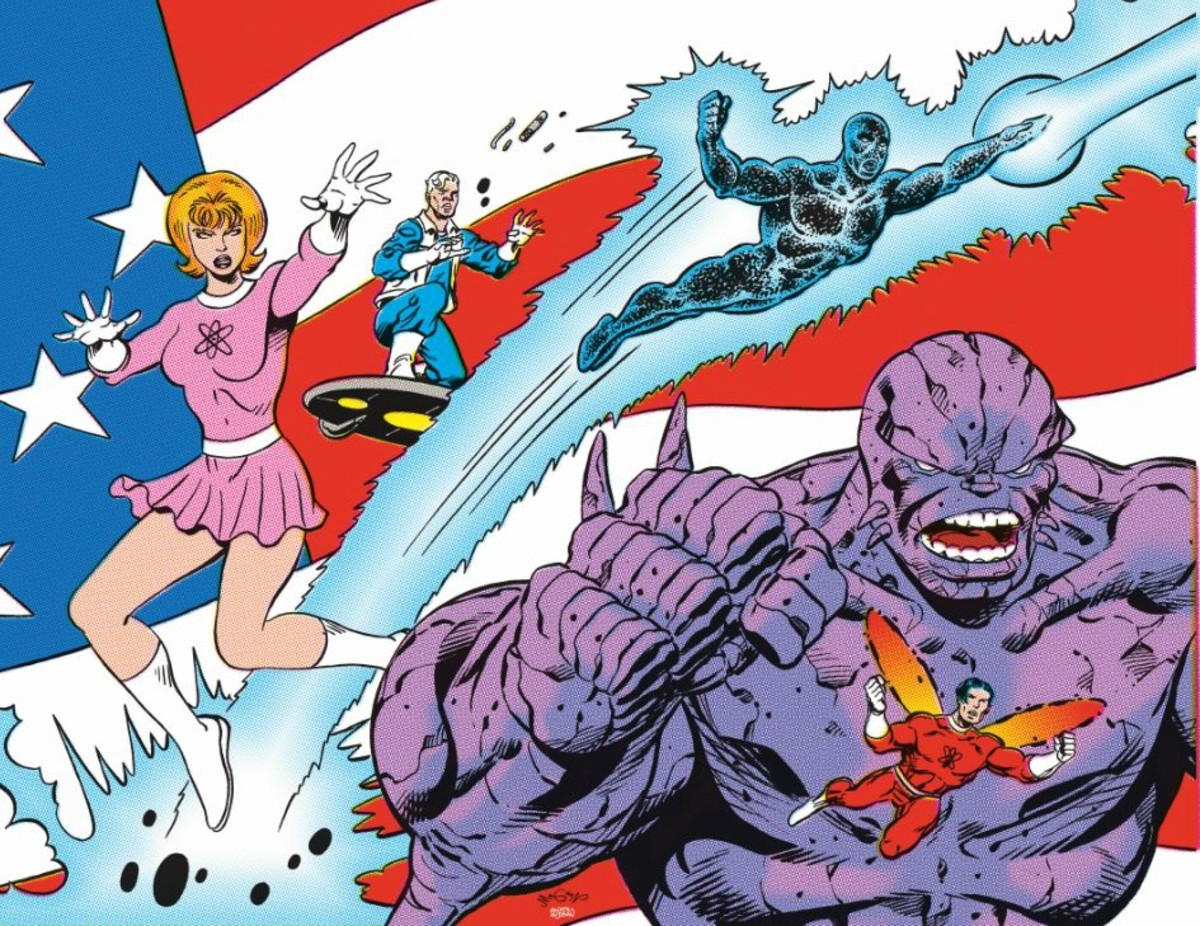The 6 Ages of Comics
- As Seen Through the Lens of my Life
I cannot remember the exact age that I got interested in American comic books but I know that I was quite young – certainly younger than ten; probably quite a bit younger than ten. I would be given ten shillings pocket money (a lot of money in those days) on a saturay morning and I would go into Winnies next door and buy up as many American comics as I could. I would take them back home and read them and read them and read them until I got bored. I would then return them on a 2 for 1 basis and get some more comics and read them and read them and read them. This would go on all day saturday until I had just one comic I would then swap it with sweets. I know that I was certainly interested in English comics like Beano and Dandy and continued to be interested in English comics like Whizzer and Chips as and when these comics came out. But my greatest passion was for the American comics. It was probably because of their interest in science fiction themes – after all, Superman was an alien and many of the superheroes got their powers by dabbling in science. Certainly the format had something to do with it as well. They were in colour throughout and even though the insides were like newspaper, the cover was shiny and bright and exciting.
THE NAIVE YEARS
My earliest memories are of DC Comics (Superman, of course, Batman, Aquaman, Metamorphoso, Legion of Superheroes) and Charlton Comics (Captain Atom, the Beetle and the totally mental Prankster). The essence of the stories were pure panto: in one Superman and Batman appear to fall in love with the same woman; in another Jimmy Olsen became a huge sea beast; and in my favourite story, Krypto the Superdog formed the Legion of Superdogs to right wrongs on some distant planet. There was no depth and certainly no darkness in them. Even Batman who had been a dark figure from the outset when designed by Bob Kane had become this caricature of himself as this do-gooder dresses up as a flying rat as if he was going to a fancy dress party rather than fighting crime. My favourites were the Legion of Superheroes because that was real science fiction: it was set in the future and had space travel and aliens and weird technologies and crazy uniforms. It was like a comic book re-make of the Forbidden Planet.
ONCE MORE WITH FEELING
Then
I met Marvel comics. I think that my first experience of them was
through the British reprints Fantastic and Terrific. Their grittier
drawing style and more complex characters were a real glass of cold
water in the face. Superman and Batman were forgotten and it was
Avengers and the X-Men because they were somehow more realistic and
more scientific. Of course, this was nonsense as seen through the
eyes of a child. Their scientific pedigree was really lacking.
Take the Avengers: one was a Norse god, there is nothing scientific
in that; Captain America and Iron Man are believable because they are
technologically enhanced humans; but the Wasp and Ant Man? Can anyone
really believe in a gas that can shrink a human down to ant-size and
help one of them to grow wings? Come on! The X-Men are even worse
because they were born with their powers due to mutations in their
DNA. So, according to that explanation, we must all have the ability
to create ice and fire laser blasts out of our eyes hidden somewhere
in our genes. The Beast, and to some extent Angel, are almost
believable because at least their talents are similar to natural
creatures. It is even possible to believe that if telekinesis exists,
it must be controlled by something in our genes, so Professor X and
Marvel Girl are OK. But Cyclops and Ice Man? No way! And it only got worse with Havoc, Storm, Colossus and Nightcrawler
The whole illusion ended for me when a character in Quack Comics talking about superheroes with problems said, “Any loser who can beat the chicken soup out of a tank isn't a loser”
THE SEVENTIES
The Seventies saw a real sea-change in DC comics. The superheroes still had problems, but now they did not wallow in them, they got off their backsides and fought crime in spite of them. Neal Adams' Batman, dropped Robin as a sidekick and drove around in a souped-up Aston Martin. And Jack Kirby's New Gods showed god-like superheroes with industrial-sized problems but they did not let them get in the way of their actions. Then there were ground-level comics like Star Reach and Heavy Metal where more mature themes could be visited and dealt with.
THE EIGHTIES
This decade saw the publication of Frank Miller's “The Dark Knight Returns” and Alan Moore's “Watchmen”. They were hailed as landmarks in a new change of direction for comics where comics finally grew up. I liked Dark Knight although for me it was not new territory in comics (certainly not for Batman) or in storytelling in general (these themes had been explored much earlier in Heavy Metal). At about the same time, a TV series called “London's Burning” came out that hooked me completely. It was about a group of fire fighters who very imperfect people yet when the alarm went would put aside their differences and go out to fight fire and save lives. And it was not the only series of its type – it was just the one I liked. The best of the comics reflected this same “slice of life” storytelling but most fell woefully short. In the case of "Watchmen", their realism was nothing more than replacing superficial formulaic storytelling starring two-dimensional heroes with superficial formulaic storytelling starring two-dimensional anti-heroes.
LET'S GET THE SPIDERMAN DOLL – I MEAN - ACTION FIGURE
By the Nineties and Noughties I had grown tired of comics. In most part. Their growing up had meant that they had gone from kids to surly teenagers who thought they were so relevant. So I missed out on the re-packaging for movies, the re-packaging for realism in the form of the Ultimate range and the re-numbering issues from 1 again for the sake of new readers. And frankly I am glad I did. This shameless commercialism showed a total disregard for their consumers, especially people like me who had supported them through the decades. It showed that Marvel were just there to make money and quality was not part of their product. So superheroes became commodities or brands that could be repackaged again and again in different ways where the only consideration was money. So you had comics like 1608 where the X-Men were set in the year 1608; or where the superheroes became apes or zombies
THE NEW KIDS ON THE BLOCK
Do I believe that it is all doom and gloom? Certainly not. There has been some notable work done by individual writer/artists like Mike Mignola (Hellboy and B.P.R.D.), Todd McFarlane (Spawn) and the creative team behind Witchblade.Ironically, all of these titles show an interest in moving away from science as the explanation of super powers. In addition, I see the author Neil Gaiman has done some work in this area. It would be nice to see more authors trying this medium of expression out.
Anyway, comics are a lot like Rock music. As soon as it gets old and stale, someone comes along and re-invents it giving it back its old vigour. That Al Davison decided to write his autobiography on how he has lived with Spina Bifida in the graphic novel "The Spiral Cage" shows that combining art, words and sequence is far from a bankrupt method of expression.

